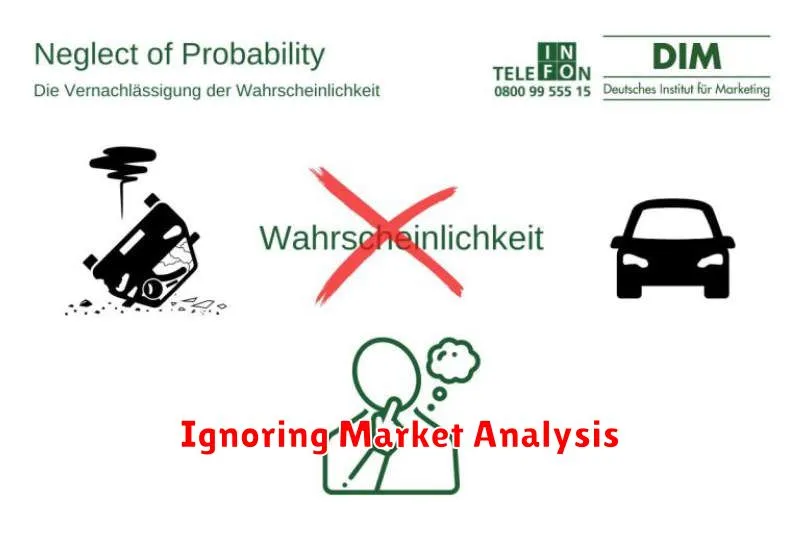Navigating the volatile world of cryptocurrency trading can be daunting for beginners. Many new investors fall prey to common pitfalls, leading to significant losses. This article will highlight 5 mistakes beginners make in crypto trading, offering crucial insights to help you avoid costly errors and build a successful crypto trading strategy. We’ll cover everything from emotional decision-making and poor risk management to neglecting fundamental analysis and overlooking the importance of diversification. Learn how to sidestep these common crypto trading mistakes and improve your chances of achieving long-term profitability in the exciting, yet challenging, realm of digital assets.
Not Setting Stop Losses

One of the most critical mistakes novice cryptocurrency traders make is failing to set stop-loss orders. A stop-loss order automatically sells your asset when it reaches a predetermined price, limiting potential losses. Without this crucial safeguard, a sudden market downturn can wipe out a significant portion of your investment.
Ignoring stop losses exposes you to substantial risk. The volatile nature of the crypto market means prices can plummet rapidly. A stop-loss order provides a safety net, preventing catastrophic losses and allowing you to cut your losses and re-evaluate your strategy rather than hoping for a price recovery that may never happen.
Setting appropriate stop-loss orders requires careful consideration of your risk tolerance and market analysis. While there’s no one-size-fits-all approach, understanding the importance of this risk management tool is paramount for long-term success in crypto trading. Learn to use stop losses effectively to protect your capital.
Overtrading Without a Plan

One of the most common mistakes novice cryptocurrency traders make is overtrading without a well-defined plan. This often stems from a combination of excitement, fear of missing out (FOMO), and a lack of understanding of risk management.
Overtrading, characterized by frequent and impulsive trades, significantly increases the likelihood of incurring substantial losses. Without a clear strategy outlining entry and exit points, risk tolerance, and stop-loss orders, traders are essentially gambling, rather than investing.
A solid trading plan should include specific entry and exit criteria, based on technical or fundamental analysis, as well as a predetermined risk management strategy to limit potential losses per trade. Without this structure, emotional decisions fueled by market fluctuations will likely lead to poor outcomes.
Developing a comprehensive trading plan, even a simple one, is crucial to mitigating the risks associated with overtrading. This involves thorough research, setting realistic goals, and rigorously adhering to the established rules, even during periods of market volatility. It’s far better to miss out on a few potentially profitable trades than to lose significant capital through impulsive decision-making.
Ignoring Market Analysis

One of the most significant mistakes novice cryptocurrency traders make is ignoring market analysis. Successfully navigating the volatile crypto market requires a deep understanding of trends, price movements, and market sentiment. Failing to conduct thorough research, including studying charts, analyzing trading volume, and understanding technical indicators, dramatically increases the risk of making ill-informed trading decisions.
Fundamental analysis, examining the underlying technology, adoption rates, and overall project health of a cryptocurrency, is equally important. Without a solid grasp of both technical and fundamental factors, beginners are essentially gambling rather than trading strategically. This often leads to substantial losses.
Successful crypto trading hinges on informed decision-making. By neglecting market analysis, beginners deprive themselves of the crucial insights necessary to identify promising opportunities and mitigate potential risks. Instead of impulsive trades, prioritizing a comprehensive understanding of market dynamics is crucial for long-term success.
Falling for FOMO Trades

One of the biggest pitfalls for novice cryptocurrency traders is succumbing to the fear of missing out (FOMO). This emotional response leads to impulsive decisions, often resulting in poor trades.
FOMO-driven trading ignores fundamental analysis and rational risk assessment. Instead, it prioritizes immediate action based on perceived market momentum, often at inflated prices. This can quickly lead to significant losses.
To avoid FOMO traps, beginners should focus on developing a robust trading plan with clearly defined entry and exit strategies. Prioritizing thorough research and adhering to a disciplined approach will help mitigate impulsive decisions driven by market hype.
Establishing a realistic risk tolerance and sticking to it is crucial. Never invest more than you can afford to lose. Remember that the cryptocurrency market is volatile; missing a short-term opportunity doesn’t necessarily mean missing out on long-term gains.
Consider utilizing tools like stop-loss orders to limit potential losses. These automated orders will sell your assets when the price drops to a predetermined level, reducing the impact of impulsive reactions to market fluctuations.
Using High Leverage with Minimal Knowledge

One of the most significant mistakes novice cryptocurrency traders make is employing high leverage with limited market understanding. Leverage magnifies both profits and losses; a small price movement against your position can lead to substantial losses, potentially exceeding your initial investment (margin call).
Insufficient knowledge of market dynamics, technical analysis, and risk management makes using leverage extremely dangerous. Beginners often lack the experience to accurately predict price fluctuations and properly assess risk, making leveraged trading a recipe for disaster.
Before considering leverage, thorough research and practice with smaller amounts are crucial. Focus on understanding fundamental and technical analysis, risk management strategies, and market psychology before engaging in leveraged trading. Only then can you responsibly assess and mitigate the inherent risks.
In short, avoid using high leverage until you have sufficient experience and a comprehensive understanding of the cryptocurrency market. The potential rewards are tempting, but the risks far outweigh the benefits for beginners.

